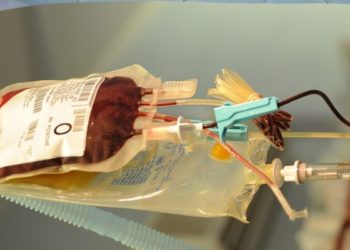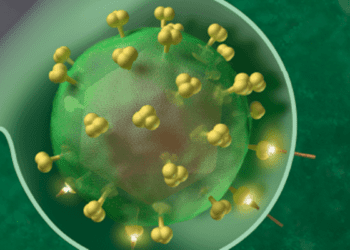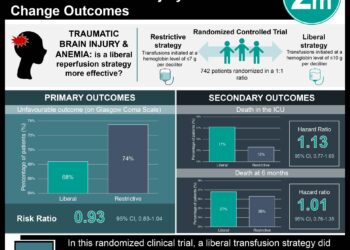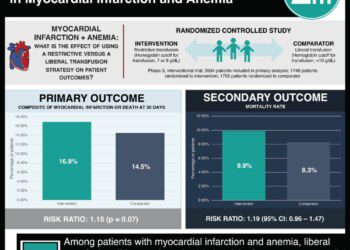Nonlinear relationship between maternal hemoglobin and infant development
1. Maternal hemoglobin levels were measured at 2 antenatal visits and delivery, while their infants were followed 1 year later and assessed for gross motor (GM) functions. Prevalence of maternal anemia fell from 67% in the first antenatal visit to 38.4% at the time of delivery.
2. GM scores peaked and then steadily increased at maternal hemoglobin levels between 90 and 110 g/L, and fell sharply at levels above 110 and below 90 g/L, revealing an inverted U-shaped relationship.
Evidence Rating Level: 2 (Good)
Study Rundown: The fetal brain is a rapidly developing, highly sensitive structure that depends heavily on a steady oxygen supply provided by maternal circulation. While physiologic changes of pregnancy lead to dilution of maternal hemoglobin, pathologic levels of anemia are detrimental to fetal development. Previous research has detected risk factors for anemia in pregnancy, leading to preventative interventions. However, less is known about the impact of maternal hemoglobin levels in pregnancy on the early developmental trajectory of the infant. This study evaluated a sample of pregnant women in an ongoing study of maternal anemia. Their hemoglobin levels were measured at 2 antenatal clinic visits at least 1 month apart, as well as at delivery. Their children were followed until 1 year of age, when they were assessed for developmental milestones. After controlling for maternal variables, children whose mothers had a hemoglobin between 90 g/L and 110 g/L had the highest GM scores, while those whose mothers had levels below 90 or above 110 g/L experienced a sharp decline in GM. Although this study quantifies the magnitude of anemia on infant development, it likely underestimates the impact as these mothers were participating in a study meant to maximize maternal health during pregnancy.
Click to read the study, published today in Pediatrics
Relevant Reading: Maternal hemoglobin level and fetal outcome at low and high altitudes
Study Author, Dr. Michael O. Mireku, MPH, PhD, talks to 2 Minute Medicine: Ecole des Hautes Etudes en Santé Publique, Département Epidémiologie et Biostatistiques, and Université Pierre et Marie Curie, Ecole doctorale Pierre Louis de santé publique, Institut de Recherche pour le Développement, Mère et Enfant Face aux Infections Tropicales, Paris, France.
“Based on the findings of our study, pregnant women with hemoglobin concentration slightly below the cut-off for anemia had children with higher gross motor function at age one. Women with very low or high hemoglobin levels on average had poorer gross motor function. This inverted U-shaped relationship had already been shown between the adverse birth outcomes and hemoglobin concentration by other researchers, but not between infant motor function and prenatal hemoglobin concentration. Being the first study of its kind, further research is needed on this subject to confirm our findings.”
In-Depth [prospective cohort study]: Participants included mothers of 636 children from Benin, Africa enrolled in the Malaria in Pregnancy Preventive Alternative Drugs (MiPPAD) study, which is comparing the efficacy of 2 anti-malarial agents in the intermittent preventive treatment of malaria in pregnancy. Hemoglobin levels were drawn at the first antenatal care (ANC) visit, at a second visit ≥1 month later, and finally at delivery. Mothers received oral ferrous sulfate if found to be anemic, or blood transfusion if severely anemic. Prevalence of anemia (hemoglobin < 110 g/L) was 38.4% at time of delivery, down from 67% at first ANC visit. Daily supplementary folic acid and ferrous sulfate, as well as mebendazole (anti-helminth) were provided to all mothers until 3 months postpartum. When their children turned 1 year old, they were assessed in the 5 domains of childhood development, including gross and fine motor skills, language reception and expression, and visual reception, using the Mullen Scales of Early Learning. Overall, findings indicated a significant “inverted U-shaped” relationship between maternal hemoglobin levels at the first and second visit and infant GM score. Specifically, GM scores peaked and then steadily increased at hemoglobin levels between 90 and 110 g/L, and fell sharply at levels above 110 and below 90 g/L.
Image: CC
©2015 2 Minute Medicine, Inc. All rights reserved. No works may be reproduced without expressed written consent from 2 Minute Medicine, Inc. Inquire about licensing here. No article should be construed as medical advice and is not intended as such by the authors or by 2 Minute Medicine, Inc.







